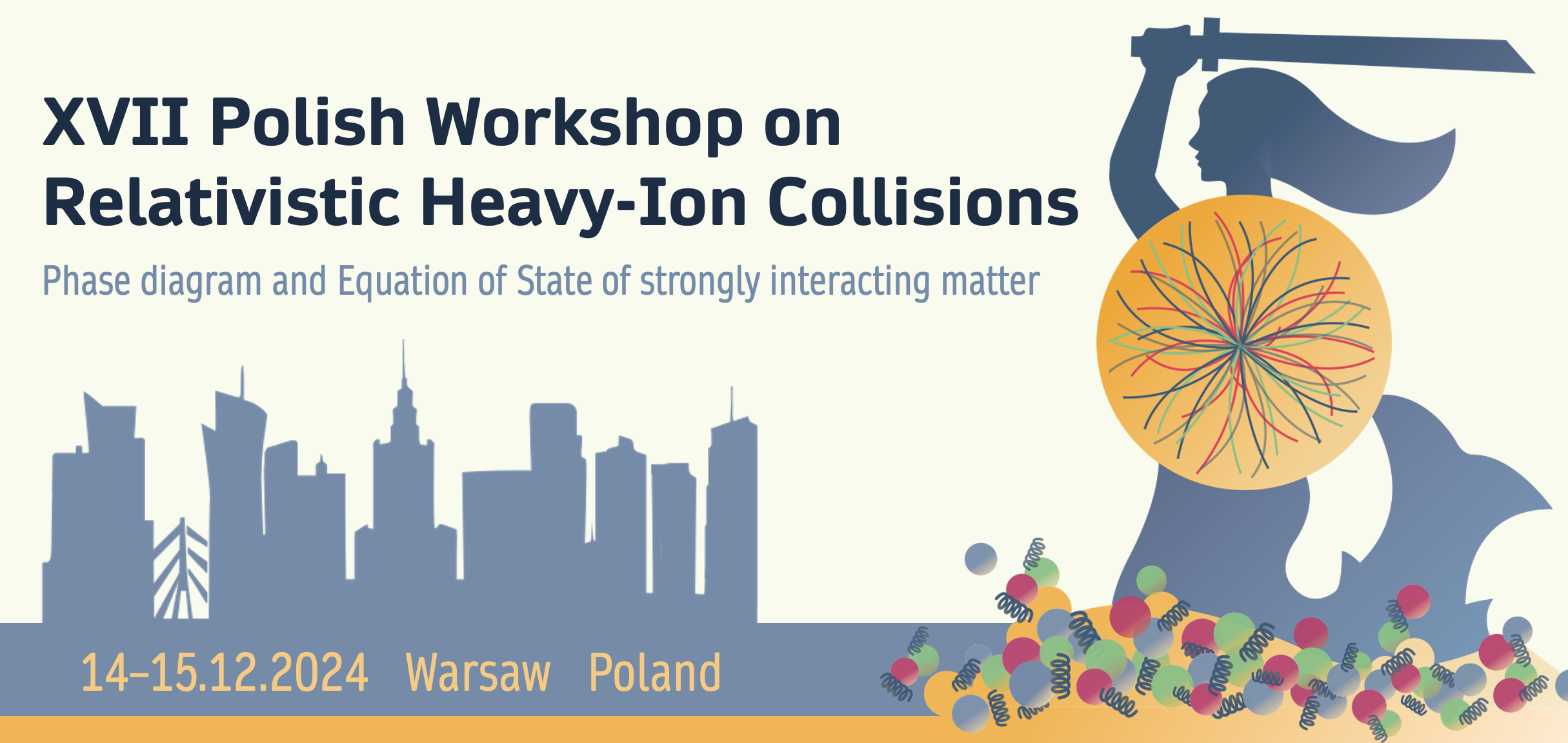Conveners
Session 3: Sunday morning
- David Blaschke
- Maciej Rybczyński (Kielce)
Compressed Baryonic Matter (CBM) is a fixed-target experiment that is part of the Facility for Antiproton and Ion Research (FAIR) that currently is under construction. Its primary objective is to investigate the phase diagram of strongly interacting matter (QCD) under conditions of high net-baryon density and moderate temperature. This will be achieved by studying heavy-ion and hadron...
The experimental particle yields (36 multiplicities in total) from pp interactions around $\sqrt{s} \sim $ 10 GeV are reasonably described [1] within statistical hadronization model ThermalFist [2]. The volume for strangeness was used as an additional free parameter, essential for the quality of the reproduction of experimental results (-3$\pm$17 \% average relative difference). Among the...
Relativistic heavy-ion collisions provide a way to study the properties of nuclear matter under extreme conditions. One method for investigating the characteristics of bulk matter is the femtoscopy technique. This method allows for the extraction of the space-time characteristics of the expanding fireball produced in heavy-ion collisions and to collect information on the interaction between...
The availability of multidimensional and multivariate data on femtoscopic radii in heavy-ion collisions (HIC) is marginal at centre-of-mass energies of a few GeV. It impairs the development of theoretical models that describe the particle dynamics of HIC at those energies. The currently available femtoscopic radii were primarily extracted from the measurement of identically charged pions,...
The study of femtoscopic correlations between photon pairs, although challenging from an experimental standpoint, can serve as a complementary approach to traditional hadron femtoscopy. Owing to the penetrative nature of photons, which are unaffected by strong or electromagnetic interactions, such measurements can be used to probe the early stages of heavy-ion collisions, prior to freeze-out....
The second quantum revolution is opening new avenues for development. The three main pillars which sustain the current effort are quantum telecommunication, quantum computing and quantum sensing. The three fields are tightly connected to each other and advances in any of them move the boundaries of the whole field. On an international scale, there is an ongoing effort to bridge the...
Identifying products of ultrarelativistic collisions, such as the ones delivered by the LHC and RHIC, is one of the crucial objectives of experiments such as ALICE and STAR, which are specifically dedicated to this task with a number of detectors allowing particle identification (PID) over a broad momentum range.
Recently, as a team of physicists and computer scientists at the Warsaw...
Measurements of top-quark pairs in heavy-ion collisions are expected to provide novel probes of nuclear parton distribution functions as well as to bring unique information about the time evolution of strongly interacting matter. We report the observation of top-quark pair production in proton-lead collisions at the centre-of-mass energy of 8.16 TeV in the ATLAS experiment at the LHC....
Jets of strongly interacting particles represent a useful means to examine particle interactions within the hot and dense medium of a quark gluon plasma (QGP)
that can be recreated by ultrarelativistic heavy ion collisions.
I present a Monte-Carlo algorithm, where jets evolve in the medium via the jet-medium interactions of scatterings and medium induced radiations as well
as vacuum like...
Based on a generalized Beth-Uhlenbeck approach to thermodynamics of QCD we explain why the abundances of hadrons produced in ultrarelativistic heavy-ion collisions are well described by the hadron resonance gas (HRG) model with a sudden chemical freeze-out at a well-defined hadronization temperature despite the fact that state of the art results of lattice QCD indicate a smooth chiral...
We present a differential study of $\Lambda$ hyperon polarization in central Au+Au collisions at $\sqrt{s_{NN}} = 7.7$ GeV, employing the microscopic transport model UrQMD in conjunction with the statistical hadron-resonance gas model. The resulting thermal vorticity configuration effectively manifests as the formation of two vortex rings in the forward and backward rapidity regions. We show...
We analyze an effective statistical model for nuclear matter based on a virial-type expansion for the internal energy. In the thermodynamic limit, the order parameter satisfies an integrable partial differential equation, whose solution is a family of equations of state unveiling nuclear and quark-hadron phase transitions through gradient catastrophe and shock formation. We further demonstrate...
The matter produced in an ultra-relativistic heavy-ion collision, dubbed as the QGP, posses a temperature $10^5$ times that of Sun's core and survives for a very short time ($10^{-22}$ s), producing thousands of particles which exhibit collective motion described by some global observables, e.g. charged particle multiplicity($N_{ch}$), mean transverse momentum per particle ($[p_T]$), harmonic...
Femtoscopic correlations allow us to probe into the space-time structure of the source of particle emission, which appears after a heavy-ion collision. Most analyses focus on collisions of heavier elements or high energies (or both) as it allows for the usage of so-called smoothness approximation. In this work, the applicability of this approximation will be tested, as it does not work at low...
